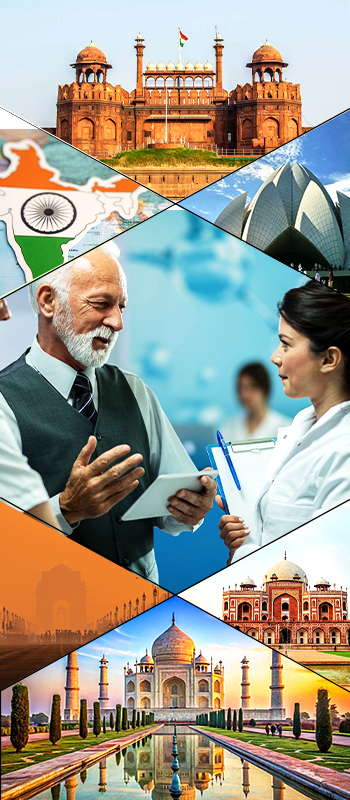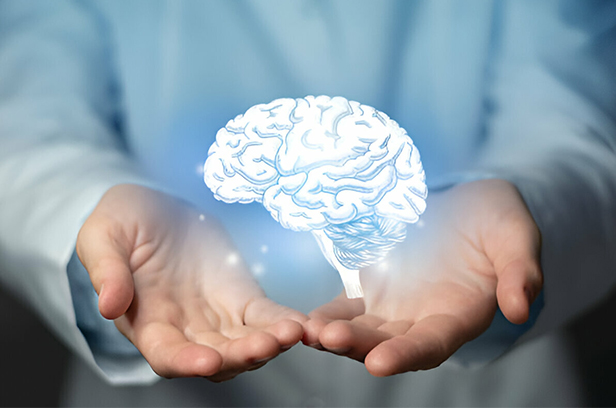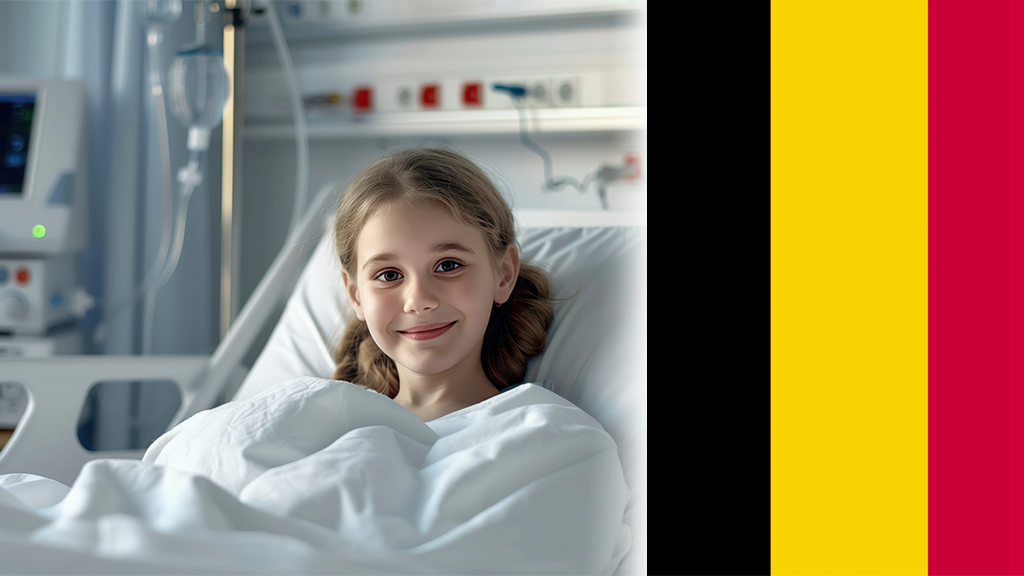Managing a serious medical illness can be overwhelming—for the patients, certainly, and for their families. Whether the condition is neurological or orthopedic, early treatment is necessary to avoid further complications. However, conventional medicine often tries to alleviate symptoms rather than to cure the root cause of the disease. This is where stem cell therapy stands tall as a revolutionary remedy, providing Belgian patients and beyond with a sliver of hope and enhancing healthcare outcomes around the globe.
India has shown spectacular advancements in regenerative medicine with advanced stem cell therapies at economical prices. India is emerging as an attractive center of high-quality medical care for numerous Belgian patients because of its cutting-edge healthcare infrastructure and highly skilled specialists. With personalized treatment plans and comprehensive aftercare, India offers a holistic approach that leads to better recovery and long-term well-being.
When it comes to world-class treatment options, India is gaining international patients in search of advanced alternatives to traditional medicine. If you wish to know how stem cell therapy in India is gaining popularity among Belgian patients and changing lives, read on!
How Stem Cell Treatment Helps Belgian Patients in India
What Is Stem Cell Therapy?
Stem cell therapy is a new type of treatment in modern medicine and treatment for a number of diseases and trauma. It is known as one of the most important breakthroughs in regenerative medicine, as this therapy is derived from the body’s natural ability to heal, repair, and regenerate damaged or diseased tissues.
Overview of Stem Cells
Stem cells are a special type of cells that can develop into many different cell types in the body. This is critical for healing and regeneration of all tissues as well as normal cellular function. They are classified as adult stem cells, bone marrow stem cells, adipose stem cells, and human umbilical cord mesenchymal stem cells. There are certain properties for each class.
They have applications in regenerative medicine for neurologic, orthopedic, and autoimmune disorders. Stem cells could lead to new intervention approaches and better healing opportunities.
Types of Stem Cells
- Adult Stem Cells
Adult stem cells are unspecialized cells found in certain tissues or organs, and they are involved in replacing lost or damaged cells. Unlike embryonic stem cells, they are multipotent—they can differentiate into various but limited types of cells that correspond to the lineage to which they belong.
These cells are commonly found in bone marrow, the brain, skin, and liver, and are used in regenerative medicine to treat various diseases, mainly leukemia, neurological disorders, and cardiovascular disorders, and have vast therapeutic potential with little to no ethical concerns.
- Bone Marrow Stem Cells
In the bone marrow, stem cells exist in two broad categories:
Hematopoietic Stem Cells (HSCs): These stem cells give rise to blood cells like red blood cells, white blood cells, and platelets.
Mesenchymal Stem Cells (MSCs): These cells can be made to differentiate and produce bone, cartilage, and fat cells, thus becoming helpful in total orthopedic and joint care.
Stem cells from bone marrow are commonly employed in bone marrow transplantation for leukemia, lymphoma, and other blood disorders.
- Human Umbilical Cord Tissue Mesenchymal Stem Cells
Human umbilical cord tissue mesenchymal stem cells (HUC-MSCs) are obtained from the Wharton’s jelly of the human umbilical cord. The distinctive regenerative property of these multipotent cells provides tissue repair, immunomodulation, and anti-inflammatory effects. They are non-invasively harvested and have low immunogenicity, making them suitable for allogeneic transplant use.
Their enhanced rate of proliferation and ability to differentiate into diverse cell types means that they are being investigated as potential agents of regenerative medicine in the treatment of neurological, cardiovascular, and autoimmune disorders.
- Adipose Stem Cells
They are separated from the fat tissue, which contains a lot of MSCs (adipose stem cells). They possess greater regenerative potential and increased tissue repair. It’s applied in cosmeceuticals, orthopedics, and anti-aging medicine. As they are available for harvesting via liposuction, this kind of cell source is desired for stem-cell-based regenerative medicine.
How Does Stem Cell Therapy Work?
Stem cell therapy is a novel regenerative therapy that takes advantage of the body’s self-healing mechanism to heal and repair damaged tissues. It consists of the removal, processing, and engraftment of stem cells to areas in need of healing. Here’s how it works:
- Stem Cell Extraction: There are multiple sources of stem cells, including bone marrow, adipose (fat) tissue, or umbilical cord blood. Depending on the kind of stem cells employed for therapy, the extraction procedure varies.
- Extraction & Processing & Expansion: Stem cells are extracted and purified in a laboratory so that we have the right concentration and purity. Certain processes require them to be expanded, to enhance their therapeutic potential.
- Administering Stem Cells: When ready, the stem cells are injected or infused into the area in question, which may be damaged joints, spinal cord, or diseased organs. It can be given via intravenous route or through localized injections.
- Tissue Regeneration: After administration, stem cells actively promote the healing of compromised tissues through differentiation into specialized cell types, decreased inflammation, and activation of the body’s own regenerative response.
- Recovery and Monitoring: Patients are monitored and treated to ensure progress and optimal results. Therapy can be more or less effective depending on the disease in question and the patient’s overall health.
- Examples include neurological disorders, orthopedic injuries, autoimmune diseases, and heart conditions, for which stem cell therapy provides promising solutions. It’s a revolutionary model of medicine that could change the face of health care.
About Belgium
Belgium is a small but important European country, known for its rich history, diverse culture, and political importance. It houses the European Union headquarters in Brussels and is comprised of three regions, known as Flanders, Wallonia, and the Brussels-Capital Region. The country is known for its medieval towns, beautiful architecture, and gastronomy known for waffles, chocolates, and beers. A melting pot of cultures, its multilingual society speaks Dutch, French, and German. Landmarks such as the Grand Place in Brussels, the canals of Bruge, and the historic battlefields at Waterloo attract tourists.
Belgium has a well-developed economy and important sectors are finance, pharmaceuticals, and technology. Because of its location in Western Europe, it is a very important trade center and has one of the highest standards of living in the world. South Africa has so much to offer, thanks to its efficient public transportation system that runs between major cities and neighboring countries. Education is well regarded, and universities such as K.U. Leuven and the Université catholique de Louvain are some of the top in Europe. Moreover, Belgium is at the forefront of environmental initiatives due to its commitment to sustainability and green energy.
Belgium is a captivating tapestry of culture, art, and modernity. The nation is perhaps best known for its comic book pedigree—the land that gave us such iconic figures as Tintin and The Smurfs. International crowds come for the music festivals, short film events, and art exhibitions that highlight Belgian creativity. Sports culture in the Netherlands is strong, and cycling and football are the most popular. The Tour of Flanders is one of professional cycling’s most important fixtures, and the national football team, the Red Devils, has achieved international acclaim. Belgium: the first name that comes to the world in terms of art, sport, or historical importance.

About India
A country, the largest populated with varied landscapes, rich heritage, and an impeccable culture is the Heart of India. South Asia, is surrounded by many nations and surrounded by the Indian Ocean to the south. Sowing the seeds of an ancient civilization, India can boast of the Indus Valley Civilization, the Maurya and Gupta empires—and then the Mughals and the British. Emerging from British colonial rule in 1947, India established itself as the world’s largest democracy, reconciling divergent traditions with rapid development.
The country’s economy also includes rural and agricultural-based industries despite the recent popularity of space exploration, technology, production, and narcotics along with rapidly growing economic centers such as Mumbai, Bangalore, and Delhi. Besides, many Indian achievements in science and technology particularly ISRO space missions have drawn international acclaim.
The medical tourism industry has grown exponentially and India has become a global hotspot taking full advantage of low-cost medical procedures from complex surgeries to include Ayurveda and alternative therapy as well as world-class healthcare facilities. The limited availability of medical facilities in rural areas and efforts to cover the gap using government thrust and health.
India also is one of the world’s tourist destinations with atmospheric places and scenes. The country is home to 22 official languages, an array of religions, and dozens of festivals, making it a vibrant mix of heritage and modernity. Geography, from the majestic Himalayas to the tranquil south beaches, and ancient monuments like the Taj Mahal, Jaipur forts, and Kerala backwaters attracts millions of tourists. Which is for how much are able to get done and felt for its food, parties, arts, and tech.
Why Should Belgian Patients Trust India for Stem Cell Therapy?
Stem cell therapy is now one of the most popular advanced medical treatments in India. With its cutting-edge research, state-of-the-art medical infrastructure, and skilled specialists, India has plenty to provide Belgian patients seeking efficient and affordable regenerative medicine. Here’s why stem cell therapy in India is reliable:

Advanced Medical Expertise
- World-class doctors and researchers specializing in stem cell therapy are available in India.
- Some Indian experts are trained at top international institutes and have experience of decades in regenerative medicine.
- There are specialized stem cell research facilities in the nation, which are conducting innovative clinical trials.
State-of-The-Art Healthcare Facilities
- India’s top hospitals and clinics are equipped with state-of-the-art machinery for stem cell therapy.
- These establishments are accredited by international agencies like JCI and NABH for superior patient services.
- Our interdisciplinary teams will design personalized treatment plans for neurological, orthopedic, autoimmune, and several other diseases.
Cost-Effective Treatment
- The price of stem cell therapy in India is far lower than in Europe yet with the same quality.
- Belgian patients have access to much improved standards of treatment for a very small fraction of what they would have to pay for in their home country.
- Accommodative pricing models, medical packages, follow-up, and post-treatment care are all part of the openness provided.
Ethical and Regulated Treatments
- In India, stem cell therapy is governed by strict guidelines and ethical standards to guarantee the safety of the patients.
- Hospitals are by default universal protocol to provide the best possible care.
- Legal frameworks bar untested or experimental therapies, allowing only proven therapies.
Seamless Medical Tourism
- It is much easier as India has accelerated medical visa processes for those in need of treatment.
- Hospitals assist with accommodation, language translation, and travel arrangements.
- Belgian patients can integrate therapy with a recovery-conducive stay in wellness centers across India.
Successful Success Stories
- Stem cell therapy in India is being successfully completed for thousands of international patients.
- Numerous patients have witnessed remarkable improvements in Parkinson’s disease, spinal cord injuries, and diabetes.
- Success stories and case studies showcase India’s prowess in regenerative medicine.
Belgian patients, in pursuit of cutting-edge, beneficial, and affordable stem-cell therapy in India. India stands at the top of the hierarchy for regenerative therapies with a well-established infrastructure, high success rates, and affordable treatment.
Global Stem Cell Care: For Expert Advice
Global Stem Cell Care is a trusted ally as a regenerative treatment facility and consultancy for patients from all over the globe. They have a panel of regenerative medicine professionals, who are ready to formulate a treatment plan for patients as per their requirements and conditions. They also provide regenerative treatments like stem cell injections for anything from autoimmune diseases to orthopedic diseases. Here are some reasons why you should choose Global Stem Cell Care as your collaborator:
Expertise in Medicine: Global Stem Cell Care provides you with medicine based on the ailment you are afflicted with — they have a lot of experience when it comes to stem cell treatment.
Innovative Treatments: Therapies constructed by today’s stem cell technology, in an attempt to be in a position to heal such as degenerative neurologic diseases, orthopedic impairments, and chronic disorders.
Team of Specialists: The best medical treatment is chosen for the patients at every step of their journey by seasoned, doctors and other medical specialists.
Global Reach: Patients from all over the world come to the center to seek treatment, making it a global-standard stem cell treatment center.
Patient-Friendly Approach: Global Stem Cell Care is dedicated to patient care by offering compassionate care and convenient treatment experiences.
Comprehensive Services: They offer around-the-clock services, from consultation to follow-up after the treatment to avail the patient a convenient time.
Advanced Facilities: Their centers are equipped with state-of-the-art facilities that ensure safe and comfortable treatment.
Educational Materials: Patients are counseled on their disease as well as on the treatment provided to enable them to make suitable decisions.

Conditions Treated With Stem Cell Therapy
Stem cell therapy is a less invasive and more effective option for people based in Belgium who are dealing with one of the many types of conditions that stem cell therapy can successfully treat. Stem cell therapy is an innovative treatment that harnesses the potential of stem cells to differentiate into diverse cell types to stimulate the repair and regeneration of injured tissues and organs. Stem cell therapy can treat various conditions and diseases, including the following:
Neurological disorders affect the brain, spinal cord, and nerves and can lead to conditions like Parkinson’s, Alzheimer’s, stroke, and multiple sclerosis. These disorders typically result in impaired function, impaired memory, or paralysis. Using stem cells in your treatment also increases your chances of regaining normal neurological function after the accident. Stem cells have the ability to differentiate into nerve cells and reserve the function that may be lost with these disorders, and can slow the progression of disease in patients where standard therapy offers little benefit.
- Neuropathy
- Intellectual Disabilities
- ALS/MND
- Parkinson’s Disease
- Cerebral Palsy
- Muscular Dystrophy
- Alzheimer’s disease
- Brain Injury
- Multiple Sclerosis
- Stroke
- Spinal Muscular Atrophy
- ATAXIA
- Autism Treatment
- Global Developmental Delay
- Encephalomyelitis
- Encephalo Dysplasia
- Viral Encephalitis
- Syringomyelia
- Hypoxic Ischemic Encephalopathy
- Peripheral Neuropathy
Organ-specific conditions refer to circumstances that involve the liver, kidneys, or heart and involve loss of function of the organs due to damage or chronic illness. Traditionally professional health care providers will approach these patients with either a transplant option or lifelong medication. Stem cell therapy facilitates the regeneration of damaged organ tissues, reduction of scarring, and restore organ function by exchanging damaged cells for healthy ones. This approach is safe, effective, and less invasive to promote the restoration of organ health.
- Liver Disease
- Kidney Disorder
- Cardio Vascular
- Lungs Disease (COPD)
- Burger’s
- Critical Limb Ischemia
- Erectile Dysfunction
Visual impairments, such as macular degeneration, glaucoma, and retinal injury, may result in visual loss or blindness. Conventional methods usually address symptoms more than causes. It repairs retinal cells by using stem cell therapy, fixes injured optic nerves and restores lost vision. Stem cells are injected into the site of the diseased eye, that is, the patient will expect to see enhanced vision, retardation of disease progression, or a complete recovery of eye health.
- Optic Nerve Atrophy(ONA)
- Age Related Macular Degeneration
- Retinitis Pigmentosa
- Optic Nerve Hypoplasia
- Optic Neuropathy Stem Cell Treatment
- Eye Injuries Stem Cell Treatment
- Stem Cell Treatment for Retinopathy
- Glaucoma Disease
- Retinal Detachment
- Septo Optic Dysplasia
Orthopedic disorders may cause damage to bones, joints, muscles, and cartilage, such as osteoarthritis, fractures, and degenerative disc disease. These conditions can lead to chronic pain and reduced mobility. Stem cell therapy helps promote tendon regeneration, minimize inflammation, and promote repairing of the cartilage and bone. Orthopedic patients find this treatment to be an alternative to surgery and pain management since stem cells are injected into the area thereby enhancing the body’s natural healing process.
- Osteoarthritis
- Fibromyaligia
- Osteoporosis
- Osteopenia
- Osteomalacia
- Systemic Lupus
- Spinal Cord
- Rheumatoid Arthritis
- Sports Injuries
- Ankylosing Spondylitis
- Avascular Necrosis
- Degenerative Disk
- Sciatic Nerve Injury & Sciatica
- Shoulder Injuries
- Cartilage Repair
Aging leads to reduced cellular function, impaired immunity, and chronic diseases. Stem cell therapies can counteract damage to the body by replicating bad cells, reducing inflammation, and producing more collagen. It has an effect in improving the elasticity of the skin, improving organ functions and stabilizing the effects of aging. As a result, people begin to look younger, feel better overall, and enjoy an improved quality of life as they get older.
- Vitiligo
- Anti- Aging
- Look Fit
- Hair Loss
- Skin Burns
- Major Skin Abrasions
- Feel Fit
- Body Performance
- Supportive Care
Diabetes is a chronic disease in which a person does not have enough insulin or does not respond well to insulin, resulting in excess blood sugar in the body. Stem cell treatments offer a potential cure from diabetes via regenerating the beta cells – which release insulin – in the pancreas. This, in turn, could eventually enable the body to manage blood sugar on its own, reducing the need for insulin shots and possibly preventing diabetes-related problems like neuropathy and kidney damage.
- Type 1 Diabetes
- Type 2 Diabetes
- Diabetic Foot Ulcers
- Diabetic Nephropathy
- Diabetic Neuropathy
Infertility can affect one or both partners depending on factors such as a low sperm count, egg quality, or uterine problems. There is also stem cell therapy for restoring reproductive capacity by making sperm cells improving ovarian function and repairing tissue in the uterus. This makes natural fertility possible, thereby offering couples hope to conceive if they have failed IVF or other fertility treatments.
- Female Infertility
- Male Infertility
Other than the mentioned illnesses, stem cell therapy can also be an alternative through which Belgian patients suffering from various illnesses can be treated because it provokes the immune system, replaces the damaged cells with healthy ones, and cures the illness itself rather than its symptoms. This new therapy improves the state of health and regenerative properties. Stem cell therapy is one of the latest treatments patients are turning to in Belgium to heal and recover from injury and illness, and it can bring fresh hope to a number of chronic illnesses – and improve quality of life.
- Down Syndrome
- Wound
- Connective Tissue
- Pancreatitis
- Ulcerative Colitis
- Psoriasis
- Inflammatory Bowel Disease
- Sensorineural
- Crohn’s Disease
